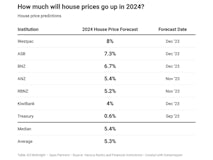Exploring DTIs, what will buoy house prices in 2024, and it's a good time to be a FHB.
Too long; didn't read? Here's this week's TLDRs...
Rounding 2023 off on a positive note
Read the article
Key Property Trends for 2024:
Read the article
2024 looks good for FHBs
Read the article
What will buoy house prices in 2024?
Read the article
DTIs: do they work and what is their desired effect?
Read the article
Pet adoption agencies back introduction of pet bond
Read the article
Growth in construction is the lowest since 2016
Read the article
KO’s half-a-billion-dollar renovation programme
Read the article



